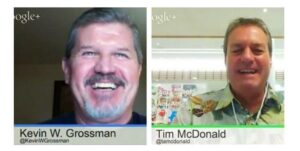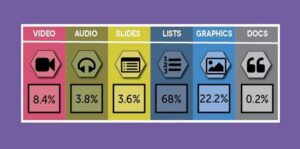
Developing The Next Generation Of Leaders
Good Day! I’ll be the guest host this Wednesday, May 21, on the TalentCulture #TChat – show which includes #TChat Radio and #TChat Twitter Chat

Good Day! I’ll be the guest host this Wednesday, May 21, on the TalentCulture #TChat – show which includes #TChat Radio and #TChat Twitter Chat

The TalentCulture #TChat Show is back live on Wednesday, May 21, 2014. #TChat Radio starts at 6:30 pm ET (3:30 pm PT) and the convo continues on #TChat Twitter chat from

Hiring managers and recruiters often have something to say about the behavior and lack of professionalism of candidates. But maybe it’s time to look in

Calvin Coolidge once said, “No man ever listened himself out of a job”. As an employee engagement specialist, this quote really resonates with me. Solid

Written by: Michael Ballard Resiliency is defined as, “Our capacity to bounce back.” I define it as, “Our capacity to increase the quality of our

Every company wants increasing employee engagement. Engaged employees are good at communicating and putting forth extra effort to fulfill expectations. I’ve recently seen articles about student

Would you rather think differently than others or differently than you’re used to thinking? Chances are good that doing the second will get you the first.

Long-winded professionals make lousy leaders. You feel no inspiration hearing them tear through another management monologue. You can’t readily recall the most important messages from

The balance of power is shifting in the employer/employee relationship. What does it mean for the future of work? The #TChat crowd weighs in

“Come, my friends, ‘Tis not too late to seek a newer world.” – Tennyson For those of us who are not employed, life can quickly become

The balance of power is shifting in the employer/employee relationship. What does it mean for the future of work? The #TChat crowd weighs in

Everyone deserves a safety net and a safe haven, even at work, and especially if you’re part of the 24% of women and 12% of
![Road To Organizational Transparency [Infographic]](https://talentculture.com/wp-content/uploads/2014/04/BlurryRoad-e1396990001278-300x227.jpg)
The past few weeks, #TChat has been focused on leadership and the best ways to keep an organization running like comfortable clockwork. Whether it be

It’s 9:15 a.m. and you’re just getting into the rhythm of your day. The phone rings, and on the other end of the line, one

Your 20s are an important time. We’re told the personal and professional choices you make during this decade set the foundation of your adult life.

One of the most difficult skills for a young professional is handling money. It’s not about balancing your checkbook or keeping up on student loan payments,

Seriously, employee engagement isn’t spurred by casual Fridays or company picnics. Effective engagement efforts aren’t perks thrown at the workforce dartboard in hopes of hitting

Being rich doesn’t mean you’re wise, and it doesn’t mean you’re good. All it means for sure is that you’re rich. With that caveat firmly

How can social learning create a competitive advantage for today’s organizations? Ideas you can use — from this week’s 3rd Anniversary #TChat events

Looking back at the best of #TChat — with gratitude for everyone who brings the TalentCulture community to life

Can you believe #TChat has been going strong for three years? Time flies on the stream! Let’s talk about the future of social learning and your thoughts on community

Age discrimination has no place at work — and yet it persists. Why? What should we do? The TalentCulture community speaks…

Do you want to lead others? Start by leaving behind age stereotypes that keep us all from getting ahead. Try these 5 steps

It may seem like a fine line between #TChat events and controlled chaos, but there’s more here than meets the eye. Our community considers the why and how of crowdsourcing

How does your digital content compare with popular blogs? And what can you do to improve? See what a TalentCulture audit revealed, and request a free audit for your site…